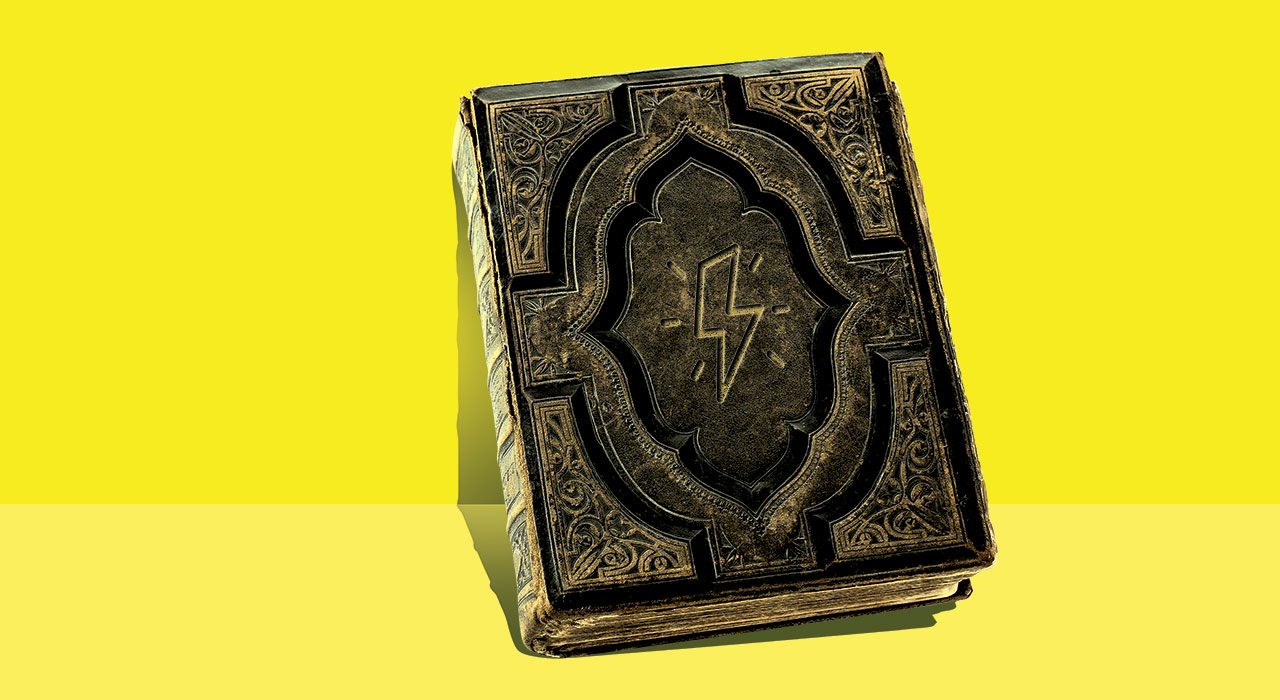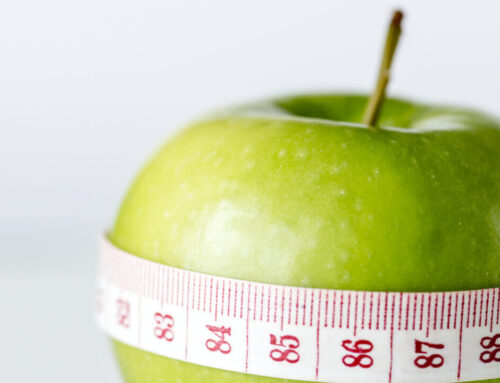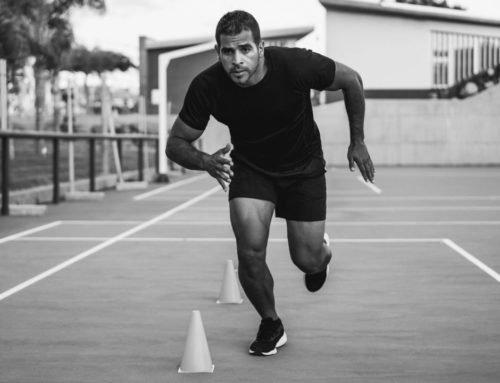From sound-emitting tools to ice baths, the area of muscle recovery is a whole new money-making juggernaut, but do any of these products actually work?
TRAIN investigates how these recovery agents really perform and wonders if we should believe the hype.
You’re lifting heavy, grunting like a wild boar during rutting season, feeling great. The Experience at the back of your mind knows the soreness will come and, while it’s satisfying to know all that grunting will lead somewhere, it would be even better if it didn’t have to hurt. Delayed onset muscle soreness (DOMS) isn’t just a pain, it also makes you stiff, and forces you to avoid certain exercises until your muscles have returned to baseline. Otherwise you’ll end up with an injury. This need for speedier pain-reducing recovery has seen a rise in companies and quacks offering all kinds of remedies and tools. We checked out the evidence to see what really will have you back sweating sooner.
Tighten Up On Pain
This involves squeezing your big muscles into gear that’s too small for you. Like compression socks people wear on planes to prevent deep-vein thrombosis, this compression apparel is intended to regulate blood flow, preventing blood from pooling in your extremities. This means that when your heart pumps oxygen-filled blood around the body, moving lactic acid-filled and deoxygenated blood away from your muscles. This improved blood flow might reduce soreness and improve performance. Scientific reports are positive – a review of studies published in the Journal of Sports Science and Medicine concluded compression-wear might reduce DOMS.
Rapid Recovery? Yes, says the research, but they aren’t willing to say to what extent This is an inexpensive way to reduce DOMS, but the effects are generally negligible. Ever seen an exact percentage improvement figure slapped onto compression gear? No and you won’t either, but it’s not from lack of trying because even if it reduced pain by 3%, you’d hear about it. Overall you should be prepared to try various brands until you find one that works best for you – the researchers who undertook the review, above, point out that as yet there is no consistent advice on how much pressure is optimum (how tight the clothing needs to be) nor whether wearing the clothing during exercise is most beneficial, or after, or both. That means you have to lurk around in that gear like a soccer mom in her lululemon gear doing her weekly shop.
Good Vibes
If massage works, it makes sense that a vibrating tool might also speed recovery. And in fact a small-scale study published in the Journal of Clinical & Diagnostic Research found exactly that – 15 minutes of massage showed the same benefits as a five-minute vibration session (50 Hz vibration), which could provide pain reduction in the 48 hours after exercise.
Rapid Recovery? Well, maybe, but this therapy is still in its formative years and much of the data could be subjective. But it could get you back to normal faster. And while the research isn’t vast, by getting yourself a vibrating foam roller, for example, you can combine two treatments in one.
Post Workout Caffeine Drinks
A quick coffee and some carbs after your workout might help prepare you for the next session. Glycogen, the source of energy for your muscles, is replenished more quickly after an intense workout if you ingest caffeine along with carbs, says a paper in the American Physiological Society. In fact, in the study undertaken, athletes who ingested caffeine and carbs showed a 66% increase in glycogen in their muscles four hours after an intense exercise programme, compared to when they only had carbs after. That means way more muscle power for the following day.
Rapid Recovery? Possibly and it may be as easy as hearing your name being called out incorrectly at Starbucks. This is one to test yourself – grab a sandwich or bowl of pasta after your workout, and chase that down with a couple of espressos. See how you feel four hours later and whether you’re ready for another workout the following day.
Freeze!
Whole body cryotherapy (WBC) is a new and increasingly popular method for athletes to relieve muscle soreness and boost recovery. Basically, it involves you putting yourself in an Arctic-style environment for a set amount of time, the idea being that cooling the muscles helps reduce inflammation and therefore soreness and so on. However, a review of controlled studies published in the Open Access Journal of Sports Medicine couldn’t conclude that it was effective. The researchers did, however, say that cryotherapy enhances users’ perception of recovery and soreness.
Rapid Recovery? Unless you’re a top-earning professional athlete with coin to fry, WBC isn’t fast or effective enough to really warrant the effort. That said, it will make you mentally tougher than a rat sandwich over time because volunteering yourself for such unpleasantness builds the kind of fortitude that’ll see you brush off the pain earned from unleashing a new personal best when you’re under the squat rack.
Roll with It
Upgraded pool noodles to some, essential recovery tools for others, foam rollers are used by professional athletes, hardcore muscle amassers and Pilates-loving ladies alike. The theory is that it works via ‘self-myofascial release’ (SMR). By using the foam roller you apply pressure on the myofascial tissues – the connective tissue that is stretched over and through your muscles – helping to release tension. This means a reduction in DOMS and also improved range of motion afterwards. Research published in the International Journal of Sports Physical Therapy suggests that it does significantly improve range of motion, reduces the symptoms of DOMS and helps prevent a fall in muscle performance after intense exercise.
Rapid Recovery? Maybe, but there’s a caveat, because the above research covered 14 studies, some of which were on a very small scale, meaning results weren’t definitive. More research is needed before it’s a certified miracle worker, but since it’s inexpensive and apparently produces results this is a pain worth enduring for less pain later.
Massaging: The Facts
Massage feels so good it almost doesn’t matter whether the science says it works or not. Fortunately, the science says it works, even just a quickie. Research in Science Translational Medicine shows that a brief 10-minute massage helps reduce inflammation in muscle, which might be part of the reason these percussive therapy devices work. The researchers actually found that the process helps trigger biochemical sensors that then transmit inflammation-reducing signals to muscle cells. Massage also signals muscle to build more mitochondria, the powerhouses of each cell that play an essential role in healing. The result? Less pain but at $60 per hour it’s not a cheap fix.
Rapid Recovery? Absolutely, says the science but realise that the more painful something is, the greater the placebo effect. Harvard Medical School pitted one placebo against another. People with chronic pain were given either sham acupuncture or a placebo pill for several weeks and those receiving the tiny pricks reported a significant reduction in their hurts that far exceeded the placebo pill. So enduring an hour with a sadistic masseuse might just make you think it’s doing you good.
Sounding It Out
Percussive therapy is the term for a new type of muscle recovery treatment and the theory behind these devices, such as the Theragun, Hypervolt and the Wahl Deep Tissue Percussion Therapeutic Massager, is that sound pulses are passed via the skin vertically into your muscle tissues, increasing bloodflow, breaking up scar tissue, improving lactic acid removal and accelerating muscle repair. Is there any solid scientific evidence for any of this? Nope.
That said, it’s clear that the sounds emitted manipulate a deeper and more extensive area of muscle tissue than your fingers would – use one of these and you can literally see the underlying muscle moving under the pressure.
Rapid Recovery? Maybe, but with some units costing $600, it’s a dent to your wallet where the rewards might be no better than a simple massage. It does feel good and may alleviate pain, which can prove to be a cost worth fronting.
Getting Tubby
A warm bath will ease sore muscles, there’s no doubt about it, the question here is when to have one. And the answer is not on the same day as your workout, but around 24-48 hours after. This is when muscles tend to stiffen up and is exactly when a bath can help relax the tension, giving you more flexibility and relieving the pain.
Rapid Recovery? Yes, this is a cheap and effective win even though it won’t speed up muscle healing necessarily, but it will make your body less stiff, which means you’ll be able to get back to working out sooner.







